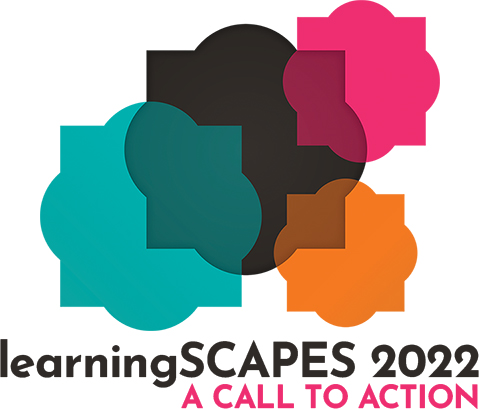 | 1 LU / HSW |
The Future of Work & Learning
 | 1 LU / HSW |
Forces in artificial intelligence and emerging research on the connection between physical movement, personal connection, and learning are converging, driving towards a future where both work and learning include less screen & seat time and more physical movement and personal connection. What will that look like? What does that mean for schools? Randy Fielding will introduce evidence that points to a more human-centered future, while also bringing everyone out of their chairs to share a bit of movement and laughter. He has been writing a series about learning spaces that support this human-centered future at Getting Smart (see Place-Based Education). He will share insights from this series, and the sense he is getting that while more and more people understand that this future is coming, there’s a lot of uncertainty about how to design learning environments where people will thrive in it. Nathan Strenge, who works to align learning environments and educational vision with schools around the world, will share a tool and simple process that anyone thinking about this future can use. 28 design patterns were introduced in The Language of School Design in 2005 – they have grown to over 70 patterns and are now freely available at SchoolPatterns.com. Randy and Nathan use design patterns to cultivate a shared spatial language that unleashes a community’s imagination and creativity in the face of this uncertain future – they’ve used it with kids as young as Kindergarten and always produce incredible design insights. Join Randy and Nathan for this interactive and fun session where you will leave with a tangible tool and process that you can use with your clients and stakeholders immediately.
Learning Objectives:

Randy is the founding partner at Fielding International, an interdisciplinary architecture and education firm that designs schools where learners thrive. He is the co-author of the Language of School Design, the recipient of 15 design awards, including A4LE’s Planner of the Year and the MacConnell Award, and the Creative Director for SchoolPatterns.com, a library of Design Patterns for Creative Learning Environments. Randy also publishes a bi-weekly blog on place-based education at GettingSmart.com.

Nathan is a Senior Learning Designer at Fielding International, where he works with innovative school communities and stakeholders around the world to create environments that foster creativity, collaboration, wellness, and belonging. Nathan serves as the USA Country Lead for Finnish NGO HundrED, a globally-recognized leader in education innovation. Nathan is also a co-founder of Exploration High School, a public school for the public good, that opened in 2021 in Minneapolis.
What is the learners’ experience? Who are they? How do they differ? How do they respond differently from one another to similar environments? Is there a one-size-fits-all solution? Or is a custom solution composed of aggregate parts more appropriate?
Primary Core Competency
Educational Visioning: Exhibits an understanding of best and next practices related to educationalleadership, programming, teaching, learning, planning and facility design. Establishes credibility with educators, community members and design professionals while conceiving and leading a community-based visioning process. Demonstrates the ability to articulate the impact of learning environments on teaching and learning and uses that ability to facilitate a dialogue that uncovers the unique needs and long-range goals of an educational institution and its stakeholders – translating that into an actionable written/graphic program of requirements for the design practitioner.
Learning Units/Health, Safety, Welfare (LU/HSW)
One of the key drivers of a human-centered future is the essential integration of health, safety, and wellness that adapts to the unique needs of all people - youth and adults, alike - in a school. We’ll call this integration holistic wellbeing. Our design patterns have a slant towards creating learning environments that favor this sense of integrated and holistic wellbeing as a core component of school facilities. This is why our session at LearningSCAPES will get people actively identifying at least three design patterns related to students' holistic wellbeing, with the ability to describe how these patterns contribute to a safe school environment. With school safety at the top of mind of many right now, we as architects and planners need to develop strong communication and language to convey the importance of holistic wellbeing in our designs. A meaningful component of the process of bringing these patterns to life is through listening to students and teachers who use the space, which is why one of the session’s objectives will be to describe a process that leverages student and teacher voice as a critical component of human-centered design. The session is one that drives people to action, so our final objective will have participants synthesize the relationship movement and relationships have on measures of holistic wellbeing. This synthesis, paired with the accessible tool of SchoolPatterns.com and a process to use it, will give people an immediate action to take that will contribute to healthier and safer schools in our human-centered future.